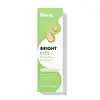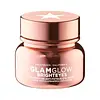What's inside
What's inside
 Key Ingredients
Key Ingredients

 Benefits
Benefits

 Concerns
Concerns

 Ingredients Side-by-side
Ingredients Side-by-side

Water
Skin ConditioningC13-15 Alkane
SolventPropanediol
SolventDiisostearyl Malate
EmollientCaprylic/Capric Triglyceride
MaskingSynthetic Fluorphlogopite
Glycerin
Humectant1,2-Hexanediol
Skin ConditioningCaffeine
Skin ConditioningCetearyl Alcohol
EmollientHelianthus Annuus Seed Oil Unsaponifiables
EmollientCoffea Arabica Seed Extract
MaskingAllantoin
Skin ConditioningTocopherol
AntioxidantNiacinamide
SmoothingHydrogenated Rapeseed Oil
EmollientFucus Vesiculosus Extract
EmollientPolymethyl Methacrylate
Cetearyl Glucoside
EmulsifyingVaccinium Macrocarpon Seed Oil
Skin ConditioningOctyldodecanol
EmollientHydroxyethyl Acrylate/Sodium Acryloyldimethyl Taurate Copolymer
Emulsion StabilisingPanax Quinquefolius Root Extract
AstringentHaematococcus Pluvialis Extract
AntioxidantAcrylates/C10-30 Alkyl Acrylate Crosspolymer
Emulsion StabilisingLecithin
EmollientBehenyl Alcohol
EmollientArachidyl Glucoside
EmulsifyingXanthan Gum
EmulsifyingPotassium Hydroxide
BufferingSodium Dilauramidoglutamide Lysine
HumectantArachidyl Alcohol
EmollientSodium Phytate
Hexylene Glycol
EmulsifyingSorbitan Isostearate
EmulsifyingMalic Acid
BufferingCaprylyl Glycol
EmollientTin Oxide
AbrasiveGlucose
HumectantAstaxanthin
Skin ConditioningMica
Cosmetic ColorantCI 77891
Cosmetic ColorantCI 77492
Cosmetic ColorantWater, C13-15 Alkane, Propanediol, Diisostearyl Malate, Caprylic/Capric Triglyceride, Synthetic Fluorphlogopite, Glycerin, 1,2-Hexanediol, Caffeine, Cetearyl Alcohol, Helianthus Annuus Seed Oil Unsaponifiables, Coffea Arabica Seed Extract, Allantoin, Tocopherol, Niacinamide, Hydrogenated Rapeseed Oil, Fucus Vesiculosus Extract, Polymethyl Methacrylate, Cetearyl Glucoside, Vaccinium Macrocarpon Seed Oil, Octyldodecanol, Hydroxyethyl Acrylate/Sodium Acryloyldimethyl Taurate Copolymer, Panax Quinquefolius Root Extract, Haematococcus Pluvialis Extract, Acrylates/C10-30 Alkyl Acrylate Crosspolymer, Lecithin, Behenyl Alcohol, Arachidyl Glucoside, Xanthan Gum, Potassium Hydroxide, Sodium Dilauramidoglutamide Lysine, Arachidyl Alcohol, Sodium Phytate, Hexylene Glycol, Sorbitan Isostearate, Malic Acid, Caprylyl Glycol, Tin Oxide, Glucose, Astaxanthin, Mica, CI 77891, CI 77492
Water
Skin ConditioningButyrospermum Parkii Butter
Skin ConditioningButylene Glycol
HumectantDimethicone
EmollientGlycerin
HumectantCetearyl Alcohol
EmollientCetyl Esters
EmollientIsostearyl Neopentanoate
EmollientCetyl Alcohol
EmollientPolybutene
Sodium Hyaluronate
HumectantCaffeine
Skin ConditioningTocopheryl Acetate
AntioxidantNarcissus Tazetta Bulb Extract
AstringentAminopropyl Ascorbyl Phosphate
AntioxidantLinoleic Acid
CleansingAcetyl Hexapeptide-8
HumectantArtemia Extract
Skin ConditioningHibiscus Sabdariffa Flower Extract
Skin ConditioningTrifluoroacetyl Tripeptide-2
Skin ConditioningAnthemis Nobilis Flower Extract
MaskingLaminaria Digitata Extract
Skin ProtectingCucumis Melo Fruit Extract
Skin ConditioningCetearyl Glucoside
EmulsifyingCholesterol
EmollientPersea Gratissima Oil
Skin ConditioningPyrus Malus Fruit Extract
Skin ConditioningLens Esculenta Fruit Extract
Skin ConditioningCitrullus Lanatus Fruit Extract
Skin ConditioningAlgae Extract
EmollientLauryl PCA
HumectantLactis Proteinum
Skin ConditioningYeast Extract
Skin ConditioningSodium Lactate
BufferingSorbitol
HumectantTrehalose
HumectantZinc PCA
HumectantGlucose
HumectantAcetyl Glucosamine
Skin ConditioningNeopentyl Glycol Diheptanoate
EmollientCarbomer
Emulsion StabilisingSodium Hydroxide
BufferingPropylene Glycol Dicaprylate
EmollientPolymethyl Methacrylate
Sodium PCA
HumectantDextran
Acrylates/C10-30 Alkyl Acrylate Crosspolymer
Emulsion StabilisingPolyethylene
AbrasiveDecarboxy Carnosine Hcl
Skin ConditioningPotassium Sulfate
Caprylyl Glycol
Emollient1,2-Hexanediol
Skin ConditioningTetradecyl Aminobutyroylvalylaminobutyric Urea Trifluoroacetate
Skin ConditioningMethyl Glucose Sesquistearate
EmollientBHT
AntioxidantDisodium EDTA
Phenoxyethanol
PreservativePotassium Sorbate
PreservativeSodium Benzoate
MaskingMica
Cosmetic ColorantCI 77891
Cosmetic ColorantCI 77491
Cosmetic ColorantWater, Butyrospermum Parkii Butter, Butylene Glycol, Dimethicone, Glycerin, Cetearyl Alcohol, Cetyl Esters, Isostearyl Neopentanoate, Cetyl Alcohol, Polybutene, Sodium Hyaluronate, Caffeine, Tocopheryl Acetate, Narcissus Tazetta Bulb Extract, Aminopropyl Ascorbyl Phosphate, Linoleic Acid, Acetyl Hexapeptide-8, Artemia Extract, Hibiscus Sabdariffa Flower Extract, Trifluoroacetyl Tripeptide-2, Anthemis Nobilis Flower Extract, Laminaria Digitata Extract, Cucumis Melo Fruit Extract, Cetearyl Glucoside, Cholesterol, Persea Gratissima Oil, Pyrus Malus Fruit Extract, Lens Esculenta Fruit Extract, Citrullus Lanatus Fruit Extract, Algae Extract, Lauryl PCA, Lactis Proteinum, Yeast Extract, Sodium Lactate, Sorbitol, Trehalose, Zinc PCA, Glucose, Acetyl Glucosamine, Neopentyl Glycol Diheptanoate, Carbomer, Sodium Hydroxide, Propylene Glycol Dicaprylate, Polymethyl Methacrylate, Sodium PCA, Dextran, Acrylates/C10-30 Alkyl Acrylate Crosspolymer, Polyethylene, Decarboxy Carnosine Hcl, Potassium Sulfate, Caprylyl Glycol, 1,2-Hexanediol, Tetradecyl Aminobutyroylvalylaminobutyric Urea Trifluoroacetate, Methyl Glucose Sesquistearate, BHT, Disodium EDTA, Phenoxyethanol, Potassium Sorbate, Sodium Benzoate, Mica, CI 77891, CI 77491
Ingredients Explained
These ingredients are found in both products.
Ingredients higher up in an ingredient list are typically present in a larger amount.
1,2-Hexanediol is a synthetic liquid and another multi-functional powerhouse.
It is a:
- Humectant, drawing moisture into the skin
- Emollient, helping to soften skin
- Solvent, dispersing and stabilizing formulas
- Preservative booster, enhancing the antimicrobial activity of other preservatives
Acrylates/C10-30 Alkyl Acrylate Crosspolymer is a synthetic polymer. It is used to thicken and improve the texture of products. Due to its properties, it can prevent water and oil ingredients from separating.
Caffeine is most associated with coffee, tea, and cacao. In skincare, it helps with calming inflammation and is rich in antioxidants.
While caffeine is used to treat cellulite and and dark circles, further studies are needed to prove this. It has been believed to help with these skin conditions due to its ability to dilate blood vessels and increase blood flow.
Some studies are looking into caffeine's ability to protect against UV rays.
Learn more about CaffeineCaprylyl Glycol is a humectant and emollient, meaning it attracts and preserves moisture.
It is a common ingredient in many products, especially those designed to hydrate skin. The primary benefits are retaining moisture, skin softening, and promoting a healthy skin barrier.
Though Caprylyl Glycol is an alcohol derived from fatty acids, it is not the kind that can dry out skin.
This ingredient is also used as a preservative to extend the life of products. It has slight antimicrobial properties.
Learn more about Caprylyl GlycolCetearyl alcohol is a mixture of two fatty alcohols: cetyl alcohol and stearyl alcohol. It is mainly used as an emulsifier. Emulsifiers help prevent the separation of oils and products. Due to its composition, it can also be used to thicken a product or help create foam.
Cetearyl alcohol is an emollient. Emollients help soothe and hydrate the skin by trapping moisture.
Studies show Cetearyl alcohol is non-toxic and non-irritating. The FDA allows products labeled "alcohol-free" to have fatty alcohols.
This ingredient is usually derived from plant oils such as palm, vegetable, or coconut oils. There is debate on whether this ingredient will cause acne.
Due to the fatty acid base, this ingredient may not be Malassezia folliculitis safe.
Learn more about Cetearyl AlcoholCetearyl Glucoside is a surfactant and emulsifier. It can be produced from synthetic of natural sources of cetearyl alcohol and glucose.
Emulsifiers help prevent ingredients from separating, such as oils and waters. It can also be used to enhance the texture of products.
As a surfactant, Cetearyl Glucoside helps during the cleansing process. By gathering all the dirt and oils, it allows these molecules to be washed away easily.
Learn more about Cetearyl GlucosideCi 77891 is a white pigment from Titanium dioxide. It is naturally found in minerals such as rutile and ilmenite.
It's main function is to add a white color to cosmetics. It can also be mixed with other colors to create different shades.
Ci 77891 is commonly found in sunscreens due to its ability to block UV rays.
Learn more about CI 77891Glucose is a simple sugar and is the most important source of energy in all organisms.
In skincare, glucose is used to hydrate the skin. It also acts as a prebiotic for our natural biome.
Glucose is hydrating due to its humectant property. As a humectant, glucose draws moisture from the air and from deeper levels in the skin.
Our skin contains many sugars that act as prebiotics and help strengthen our natural microbiome. Having a healthy microbiome helps protect our skin from harmful bacteria and other contaminants.
Studies show glucose may help with fading discoloration and pigmentation. This is because our skin metabolizes glucose into lactic acid. Lactic acid is an AHA that helps exfoliate the top layer of skin.
Learn more about GlucoseGlycerin is already naturally found in your skin. It helps moisturize and protect your skin.
A study from 2016 found glycerin to be more effective as a humectant than AHAs and hyaluronic acid.
As a humectant, it helps the skin stay hydrated by pulling moisture to your skin. The low molecular weight of glycerin allows it to pull moisture into the deeper layers of your skin.
Hydrated skin improves your skin barrier; Your skin barrier helps protect against irritants and bacteria.
Glycerin has also been found to have antimicrobial and antiviral properties. Due to these properties, glycerin is often used in wound and burn treatments.
In cosmetics, glycerin is usually derived from plants such as soybean or palm. However, it can also be sourced from animals, such as tallow or animal fat.
This ingredient is organic, colorless, odorless, and non-toxic.
Glycerin is the name for this ingredient in American English. British English uses Glycerol/Glycerine.
Learn more about GlycerinMica is a naturally occurring mineral used to add shimmer and color in cosmetics. It can also help improve the texture of a product or give it an opaque, white/silver color.
Serecite is the name for very fine but ragged grains of mica.
This ingredient is often coated with metal oxides like titanium dioxide. Trace amounts of heavy metals may be found in mica, but these metals are not harmful in our personal products.
Mica has been used since prehistoric times throughout the world. Ancient Egyptian, Indian, Greek, Roman, Aztec, and Chinese civilizations have used mica.
Learn more about MicaThis ingredient is also known as PMMA. It is a polymer microsphere, composed of tiny, perfectly spherical particles formed from repeating units.
In cosmetics, PMMA is mainly used to give a soft or blurring effect. The transparent particles are able to scatter light and help reduce the appearance of fine-lines and imperfections.
PMMA is also able to enhance the texture of products by add a smooth feel.
Learn more about Polymethyl MethacrylateWater. It's the most common cosmetic ingredient of all. You'll usually see it at the top of ingredient lists, meaning that it makes up the largest part of the product.
So why is it so popular? Water most often acts as a solvent - this means that it helps dissolve other ingredients into the formulation.
You'll also recognize water as that liquid we all need to stay alive. If you see this, drink a glass of water. Stay hydrated!
Learn more about Water